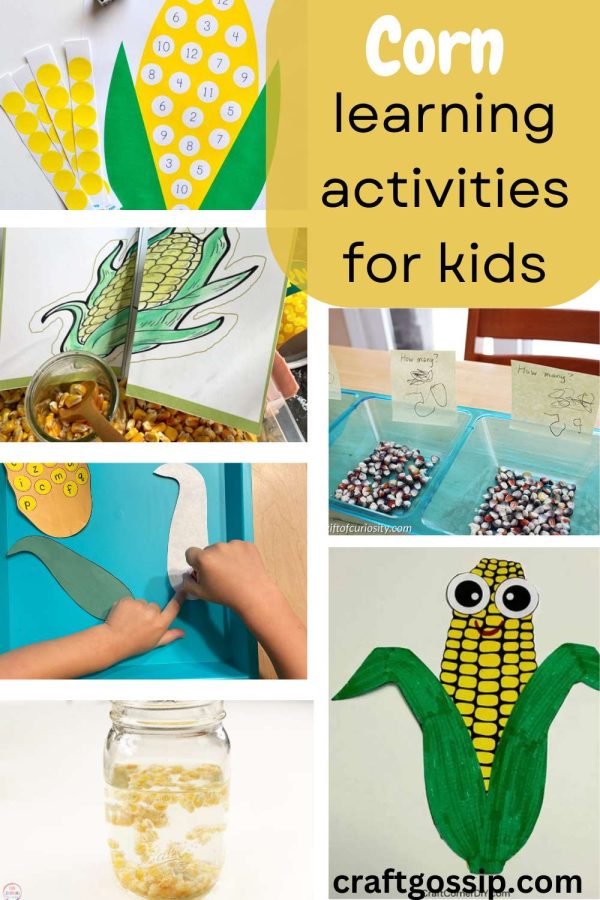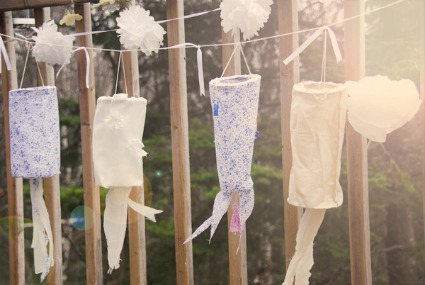I love the slightly tattered feel of these fabric lanterns created by Sibylle of Funkytime! What a fun way to incorporate fabric into a bridal shower or wedding day. For a quick and easy tutorial click this link.
Have you read?
Corn Learning Activities
 Years ago I did a post all about using Indian corn (or flint corn) in learning activities, but I don’t think I’ve ever done a post about regular corn learning activities, so let’s get into it.
Years ago I did a post all about using Indian corn (or flint corn) in learning activities, but I don’t think I’ve ever done a post about regular corn learning activities, so let’s get into it.
Print out this corn number recognition activity from I Heart Crafty Things and use yellow dot stickers for kids to match and cover the numbers from 2 to 12 that they get when rolling dice. Or do some corn kernel math with these ideas from Gift of Curiosity. Kids can guess how many kernels are in a cup or bowl, then count them, and learn about grouping 5 or 10 kernels together and using skip counting to count faster if they’re ready for that.
I think the only language arts corn learning activity I found was this letter recognition activity from My Pre K Box. Print out the corn shape and use round stickers to match the letter on the kernel to the one on the sticker.
I found a lot of printables that include the life cycle of corn and other activities, like this one from MomBrite, which includes a word search and other activities; or this 16-page Montessori inspired corn unit study that includes life cycle, labeling, three part cards and more from Only Passionate Curiosity; or the corn worksheets from Simple Everyday Mom, which includes writing practice, a letter identification maze and a label the parts of corn worksheet.
Tina’s Dynamic Homeschool Plus has a free for subscribers printable life cycle foldout that is a fun way to present the information. They used it in a sensory bin but you can just use it as a part of teaching about corn if you’d rather.
Dancing corn is a classic science activity done with baking soda and vinegar. Get the instructions from Fun Learning for Kids.
Kids Konnect has a set of printables and facts all about corn mazes, which is fun if going to a corn maze is part of your fall tradition.
And you can craft a funny ear of corn with this printable from Craft Corner DIY.
14 Mexican Street Corn Recipes [Edible Crafts]
